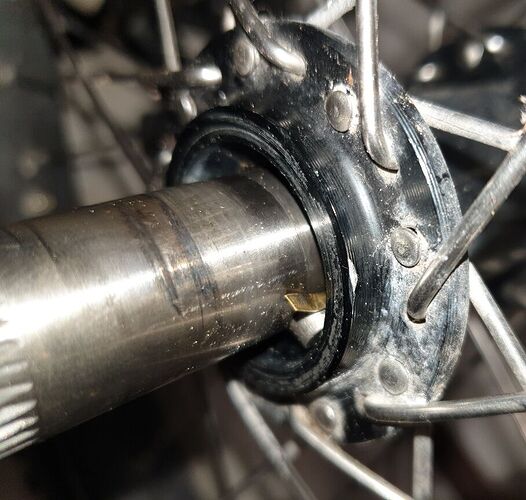Is there anything particularly special (apart from the hedgehog logo!) about an early (pre-KH) splined Onza unicycle hub that would make it worth me trying to fix/save it?
I have started working on a twin-tube-forked trials unicycle from that era that I have acquired, and I was initially thinking I would try to restore it with all its original parts, including this hub and cranks (which would have been top of the line in their day I believe). They certainly are unusual in their construction (loose fitting 6004rs 42mm bearings, any number of spacers, strange fitting of hub body to axle, self-extracting cranks,…), and are definitely a piece of history, but I’m coming up with more reasons to swap them out than keep them in.
I already knew they had proprietary 140mm cranks, so no swapping for a shorter length, but I was going to live with that. However now I see that the cranks have a large Q-factor, and the hub seems to have some noisy internal play, which may or may not be possible to repair. And then to cap it all (sorry) the uni frame has 40mm bearing housings, so the hub’s 42mm bearings have just been squashed into them with very few points of contact.
So now I’m thinking that unless this hub is some real classic that I’m lucky to have got my hands on, I’ll just swap it out for a chromoly cotterless hub with 40mm bearings so I can run some shorter cranks and not have creaks.
It seems fitting to try to get said hub from an old uni of the same sort of age, but have their been any strength improvements with newer newer chromoly hubs that would make it worth buying new(er)? Despite this being a ‘trials/street’ uni by design and previous use, I think my use of it won’t trouble a strong cotterless hub and cranks too much.
Here’s the whole uni before I started - it may get its own separate thread in due course.


